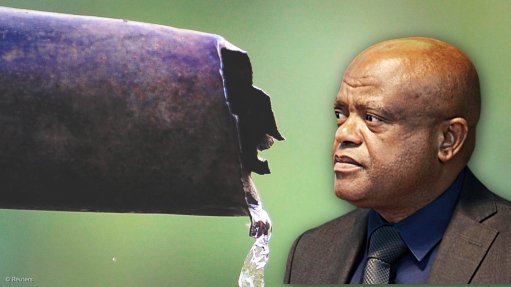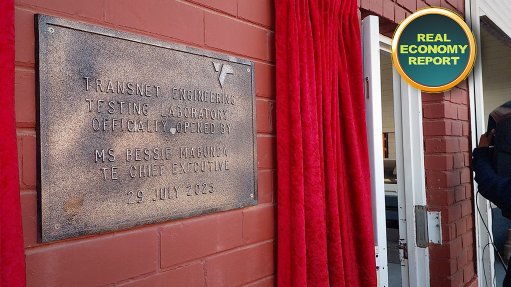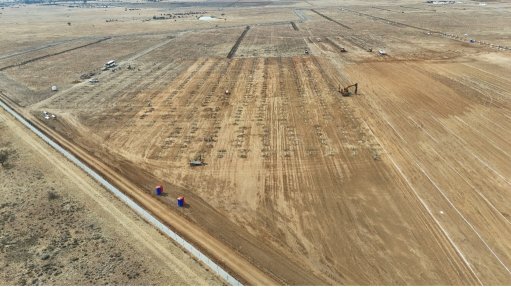Renewables jobs grow considerably in 2023, but women, Africa lagging
Last year saw the highest ever increase in renewable energy jobs, from 13.7-million in 2022 to 16.2-million; however, there is lack of geographic and gender parity, a newly released ‘Renewable Energy and Jobs – Annual Review 2024’ report by intergovernmental organisations International Renewable Energy Agency (Irena) and the International Labour Organisation (ILO) shows.
The 18% year-on-year leap shows the growth of renewables generating capacities, together with a continued expansion of equipment manufacturing.
However, a closer look at the report’s data reveals the uneven global picture. Close to two-thirds of new global solar and wind capacity were installed in China alone last year.
China leads with an estimated 7.4-million renewable energy jobs, or 46% of the global total.
The EU followed suit with 1.8-million, Brazil with 1.56-million, and the US and India, each with close to one-million jobs.
Despite considerable resource potential, Africa continues to receive only a small share of global renewables investments, which translated into a total of 324 000 renewables jobs in 2023.
For regions in urgent need of reliable and sustainable energy access like Africa, and especially in remote areas, decentralised renewable energy (DRE) solutions – standalone systems that are not connected to the utility grids – are posited to present an opportunity to both plug the access gap and generate jobs.
Removing barriers for women to start entrepreneurship initiatives in DRE can stimulate the sector, resulting in improved local economies and energy equity, the report points out.
Representing 32% of the renewables total workforce, women continue to hold an unequal share even as the number of jobs keeps rising.
To meet the energy transitions’ growing demand for diverse skills and talents, policies are required support measures in favour of greater workforce diversity and gender equity. Education and trainings must engender diverse job opportunities for women, youth, and members of minority and disadvantaged groups.
“The story of the energy transition and its socio-economic gains should not be about one or two regions. If we are all to fulfil our collective pledge to triple renewable power capacity by 2030, the world must step up its game and support marginalised regions in addressing barriers impeding their transitions progress.
“Strengthened international collaboration can mobilise increased finance towards policy support and capacity building in countries that are yet to benefit from renewables job creation,” says Irena director-general Francesco La Camera.
GROWTH
As in the past few years, the strongest impetus came from the rapidly growing solar PV sector, which supported 7.2-million jobs globally.
Of these, 4.6-million were in China, the dominant PV manufacturer and installer.
Enabled by significant Chinese investments, Southeast Asia has emerged as a notable export hub of solar PV, creating jobs in the region, the report shows.
Liquid biofuels had the second-largest number of jobs, followed by hydropower and wind.
Brazil topped the biofuels ranks, accounting for one third of the world’s 2.8-million jobs in this sector.
Increased production put Indonesia in second, with a quarter of global biofuels jobs.
Owing to a slowdown in deployment, hydropower became an outlier to the overall growth trend, with the number of direct jobs estimated to have shrunk from 2.5-million in 2022 to 2.3-million in 2023.
China, India, Brazil, Vietnam and Pakistan were the largest employers in the industry.
In the wind sector, China and Europe remain dominant. As leaders in turbine manufacturing and installations, they contributed 52% and 21% to the global total of 1.5-million jobs, respectively.
Comments
Press Office
Announcements
What's On
Subscribe to improve your user experience...
Option 1 (equivalent of R125 a month):
Receive a weekly copy of Creamer Media's Engineering News & Mining Weekly magazine
(print copy for those in South Africa and e-magazine for those outside of South Africa)
Receive daily email newsletters
Access to full search results
Access archive of magazine back copies
Access to Projects in Progress
Access to ONE Research Report of your choice in PDF format
Option 2 (equivalent of R375 a month):
All benefits from Option 1
PLUS
Access to Creamer Media's Research Channel Africa for ALL Research Reports, in PDF format, on various industrial and mining sectors
including Electricity; Water; Energy Transition; Hydrogen; Roads, Rail and Ports; Coal; Gold; Platinum; Battery Metals; etc.
Already a subscriber?
Forgotten your password?
Receive weekly copy of Creamer Media's Engineering News & Mining Weekly magazine (print copy for those in South Africa and e-magazine for those outside of South Africa)
➕
Recieve daily email newsletters
➕
Access to full search results
➕
Access archive of magazine back copies
➕
Access to Projects in Progress
➕
Access to ONE Research Report of your choice in PDF format
RESEARCH CHANNEL AFRICA
R4500 (equivalent of R375 a month)
SUBSCRIBEAll benefits from Option 1
➕
Access to Creamer Media's Research Channel Africa for ALL Research Reports on various industrial and mining sectors, in PDF format, including on:
Electricity
➕
Water
➕
Energy Transition
➕
Hydrogen
➕
Roads, Rail and Ports
➕
Coal
➕
Gold
➕
Platinum
➕
Battery Metals
➕
etc.
Receive all benefits from Option 1 or Option 2 delivered to numerous people at your company
➕
Multiple User names and Passwords for simultaneous log-ins
➕
Intranet integration access to all in your organisation




















